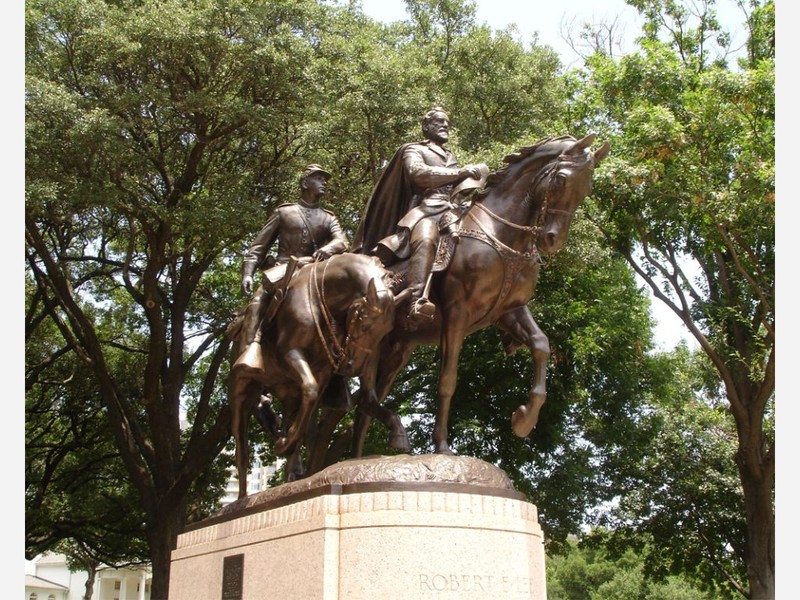Robert E. Lee Memorial
Introduction
Text-to-speech Audio
Images
Robert E. Lee Memorial.

The dedication plaque on the statue's base.

Backstory and Context
Text-to-speech Audio
The memorial was initially planned to show the general and his aide with their heads lowered in a heavy thunderstorm. The statue would have been located in Dealey Plaza until the city changed the plan and decided to place the memorial in Oak Lawn – a park developed in 1903, now known as Lee Park.
Alexander Phimister Proctor, a sculptor renowned for his skill in depicting animals, was commissioned to make the memorial. After four years and a cost of over $50,000 the statue was completed and placed atop a plinth designed by local architect Mark Lemmon. Proctor’s bronze statue is magnificent. The larger than life figures are full of character; their heads erect, the horses’ muscles rippling. Proctor paid great attention to detail by basing both figures and their horses on historic photographs.
Those who are interested may also visit a nearby fountain designed by Joe E. Lambert Jr. that is dedicated to the heroes of the Confederacy. While these monuments built in the early 1900s were part of a desire to celebrate the Old South and partially erase the history of the Union's victory and the era of Reconstruction, it is important to note that many memorials were dedicated in hopes of honoring Confederate veterans who sacrificed their lives in hopes of separating their home states from the Union. These memorials are typically located in cemeteries, such as the Confederate War Memorial which is located in Pioneer Cemetery.
Sources
Franklin D. Roosevelt: "Remarks at the Unveiling of the Robert E. Lee Memorial Statue, Dallas, Texas.," June 12, 1936. Online by Gerhard Peters and John T. Woolley, The American Presidency Project. Accessed February 25, 2016. http://www.presidency.ucsb.edu/ws/?pid=15303.
Little, Carroll M. A Comprehensive Guide to Outdoor Sculpture in Texas. Austin, TX: University of Texas Press, 1996.
